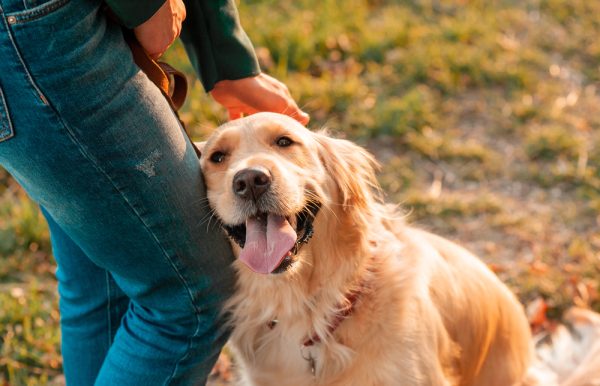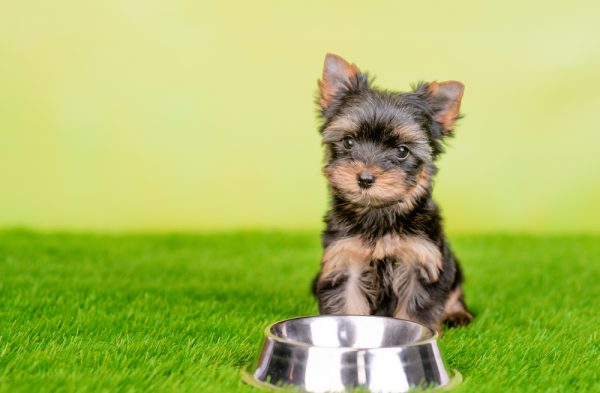In this article
View 3 More +When you observe your dog’s paws, you will notice four toes on the back feet and four toes on the front feet. But you’ll also see a fifth digit, known as the dewclaw, on most dogs’ front paws, and some dogs even have them on all four legs. But have you ever wondered why dogs have dewclaws?
Contrary to popular belief, dewclaws provide additional traction while running and stabilize the wrist (carpal) joint. Join us in learning more about the dewclaw and its purposes. We’ll also discuss what to do should a dewclaw become injured.

What Are Dewclaws?
In the dog world, the dewclaw is the equivalent of our thumb, if you will. This digit is more common on the front legs and does not touch the ground when a dog walks, but it usually touches the ground when a dog runs for extra traction, especially at high speeds.
Dewclaws located on the front legs are usually attached by bone and ligaments. Some dogs have dewclaws on the rear legs, but they are sometimes bound only by the skin although they can have cartilaginous or bony attachments.

What Purposes Do Dewclaws Serve?
Dewclaws found on the front legs aid in traction control when a dog is cantering, galloping, or jumping. The fifth appendage also helps them by acting as a grip when climbing. Suppose your dog excels in dog sports, such as agility, lure coursing, or obedience trials. In that case, dewclaws can help navigate corners during high speeds.
As we’ve mentioned, some breeds have dewclaws on the hind legs; these are considered vestigial, although some believe dewclaws function as breaks when running down treacherous terrain or while herding livestock.
Do All Dog Breeds Have Dewclaws?
All dogs are born with a single dewclaw on each front leg. However, you may notice that your dog has no dewclaw on one or both front legs; in that case, the dewclaw was likely removed at some point by the breeder or perhaps a former owner. An injury to the dewclaw is another possible reason why the dewclaw was removed.


FAQ
How Do I Maintain My Dog’s Dewclaws?
The dewclaw is an area of the leg that can be easily overlooked unless there’s a problem. However, dewclaws should be trimmed accordingly, like the other nails. An ingrown dewclaw can cause your dog pain and possibly bring about infection, and it is essential to keep the dewclaw at a suitable length to avoid injuries.
Depending on their daily activities, some dogs may wear down the dewclaws naturally, but most dogs need them trimmed. When trimming the nails and dewclaws, ensure you do not cut the sensitive quick inside the nail.
If your dog has black nails, the quick is harder to visualize. You can have your veterinarian or professional groomer trim the nails or have them advise you on how to do it yourself.

Should I Remove the Dewclaws?
A dewclaw should only be removed if a veterinarian deems this necessary; otherwise, there is no reason to remove it. A veterinarian may suggest dewclaw removal due to injury, infection, or abnormal growth.
In some breeds, like the Great Pyrenees, the dewclaw is part of the breed standard, and any missing dewclaws, front or back, will disqualify them from the show ring.
How Do I Treat an Injured Dewclaw?
Dewclaws can become injured for several reasons, such as getting snagged or caught on an object, which can cause the dewclaw to become slightly detached or even completely torn off. A dewclaw can be broken, split, and ingrown into the pad.
An injured dewclaw is extremely painful for dogs, and the best course of action is to take your pup to the vet for treatment should an injury occur, especially if an infection is present. Your vet can remove the dewclaw if necessary or trim damaged nails. Your vet may also prescribe antibiotics and painkillers if needed.

Final Thoughts
As you can see, dewclaws serve an important purpose for dogs, and they shouldn’t be removed unless medically necessary. Dewclaws also require maintenance to keep them healthy, just like a dog’s other nails. If you’re uncomfortable trimming the dewclaws, you can ask your vet to trim them or take your dog to a professional groomer. If a dewclaw becomes injured, take your dog to the vet immediately for treatment.
See also:
Featured Image Credit: msgrafixx, Shutterstock


















